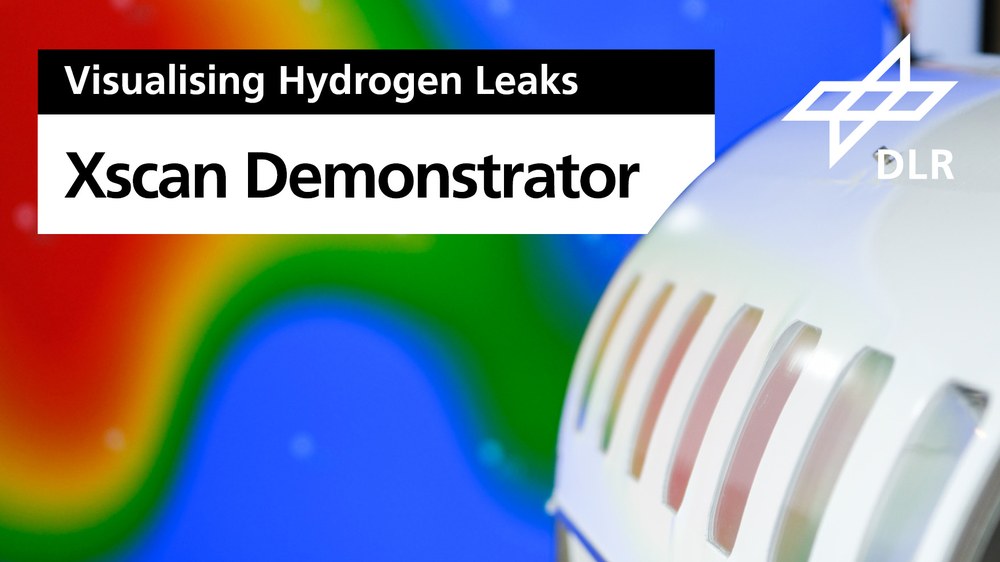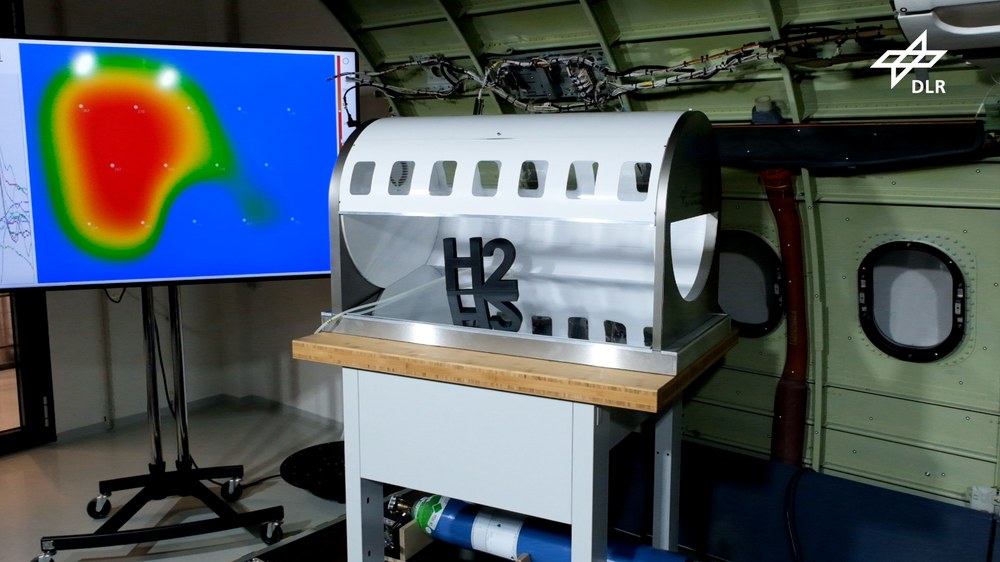H2Leak

H2Leak Teaser
Your consent to the storage of data ('cookies') is required for the playback of this video on Quickchannel.com. You can view and change your current data storage settings at any time under privacy.
H2Leak is a demonstrator featuring a scaled down version of the Xscan technology integrated into a fuselage model. Using a moveable gas outlet, it is possible to release a reference gas inside the model. The gas is detected and its distribution visualised in real time on a screen.
Hydrogen as a critical element in aviation
Hydrogen is often considered to be one of the most promising power sources for meeting the aviation sector’s long-term decarbonization goals. The Institute of Maintenance, Repair and Overhaul is therefore actively investigating the possibility of using hydrogen as an energy source for aircraft. A major challenge is the high explosiveness of hydrogen, as a hydrogen-air mixture is ignitable between 4 and 75% hydrogen by volume in air. This explosivity often leads to safety concerns, especially with regard to leakage of all hydrogen-carrying systems.

Smart detection and localization of hydrogen leaks
One goal of the institute's research work is to develop a novel hydrogen sensor system that not only guarantees safe operation of possible hydrogen systems in aircraft, but at the same time enables the fast localization of possible hydrogen leaks. To achieve this, an intelligent bus-based sensor system called "Xscan" was developed. In its final stage, it will combine a large number of sensors, each enhanced with a controller. These controllers can be programmed specifically for the assigned sensor and its parameters (status, positioning, etc.) and reconfigured by a master control unit. Each of these small computing units is interconnected via a bus interface. Since data is sent on the bus communication line almost exclusively in case of an event, a high degree of freedom and flexibility in communication is achieved. Such an event would primarily be the detection of an excessive hydrogen concentration. In such a case, the master control unit can request the raw data of the current measurement as well as past records. Using time deviations in the hydrogen detection of each sensor and knowledge of its positioning, it is possible to localise the leak. The leakage localization is currently realised by a simulated heat map, in the future potential methods may be based on machine learning.
